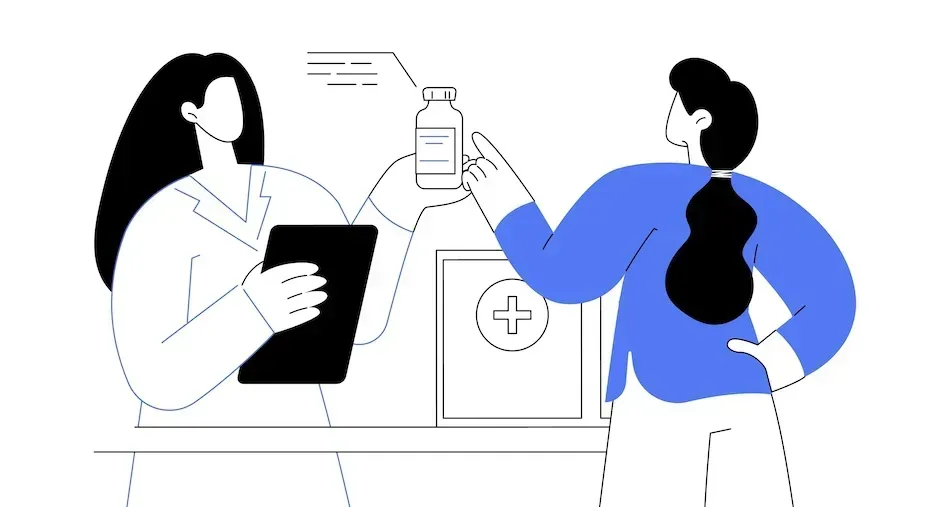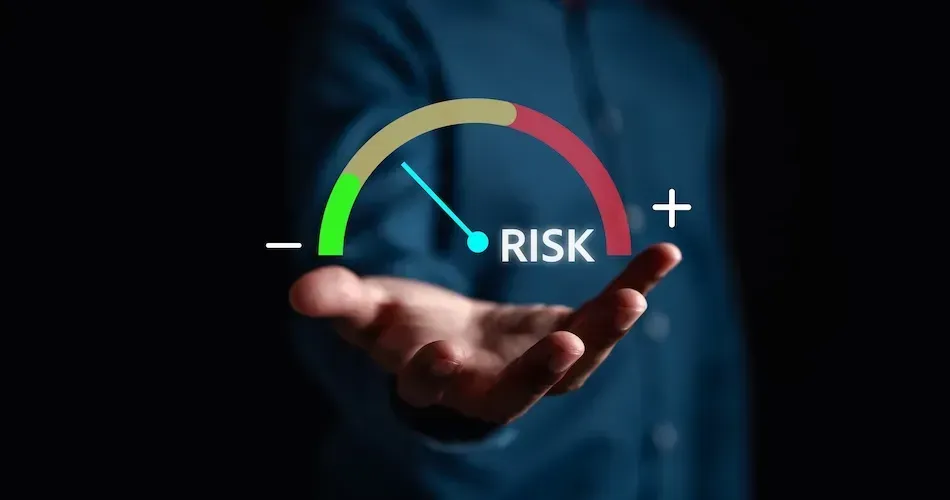Tests for CLL Patients: Polymerase Chain Reaction (PCR)

Polymerase Chain Reaction (PCR) Test for CLL Patients
The PCR test makes millions of copies of a certain portion of a cell's DNA, which can then be reviewed in greater detail. This helps doctors look closely at specific genes (parts of the DNA) to see if they show evidence of CLL.
The test is used for several reasons:
-
Detection: Sometimes, CLL cells can be hard to find, especially if they're few in number. Using PCR, doctors can amplify and detect even the tiniest amounts of CLL DNA, allowing for early detection and monitoring of the disease
-
Monitoring: CLL can be a slow-growing cancer. Some patients might not need treatment right away, but doctors need to keep a close eye on the disease's progression. Regular PCR tests can help determine if the number of CLL cells are increasing
-
Treatment Decisions: Not all CLL is the same. There are different mutations or changes in the DNA that can make some cases of CLL more aggressive than others. PCR can help identify these mutations. Knowing the specific type of CLL a patient has helps doctors decide the best treatment approach
-
Minimal Residual Disease (MRD): After treatment, doctors want to know if it worked. While standard tests might not pick up a small number of remaining CLL cells, PCR can. Finding out if there are any remaining trace amounts of CLL cells (minimal residual disease or MRD) can help doctors predict disease relapse and the next steps in the patient's care plan
Steps of the PCR Test
- Sample Collection: A sample of the patient's blood is taken usually via an arm blood draw. A bone marrow sample may also be taken depending on the patient's situation and the doctor's preference.
- DNA Extraction: The collected sample contains a mix of different cells and materials. The first step in the lab is to extract pure DNA from this sample.
- Mix Preparation: Once the DNA is extracted, it's mixed with:
- Primers: Short pieces of DNA that can bind to the beginning and end of the DNA segment the doctor wants to copy
- Taq polymerase: An enzyme that reads the DNA and helps create the copies
- Nucleotides: The building blocks of DNA
- The PCR Machine: The mixed sample is placed into a PCR machine, sometimes called a thermocycler. This machine will change the temperature of the sample in cycles, helping the DNA copying process
- PCR Steps: Inside the PCR machine, the sample goes through repeated cycles of three main steps:
- Denaturation: The sample is heated to a high temperature (around 95°C or 203°F). This causes the double-stranded DNA to separate into two single strands, much like unzipping a zipper
- Annealing: The temperature is lowered (50-65°C or 122-149°F), allowing the primers to attach (or "bind") to their specific spots on the single-stranded DNA
- Extension: The temperature is raised a bit again (around 72°C or 162°F). At this temperature, Taq polymerase starts making the new DNA strand by reading the original strand and adding the appropriate nucleotides
- Repeat: Step 5 is repeated 20-40 times. With each cycle, the amount of the DNA segment being targeted doubles. So, from just a few pieces, you quickly get billions of copies
- Analysis: Once the cycles are complete, the resulting multiplied DNA is analyzed. If the target DNA was in the original sample, there will now be billions of copies, making it easy to detect. A positive result indicates the presence of the target DNA in the sample, while a negative result indicates its absence.
For CLL patients, understanding the disease and its monitoring are crucial. PCR testing offers a detailed glimpse into the genetic makeup of CLL cells, helping you and your CLL specialist make informed decisions about your care plan. Reach out to your CLL specialist regarding any questions you may have related to your PCR test.
Polymerase Chain Reaction (PCR) Test for CLL Patients
The PCR test makes millions of copies of a certain portion of a cell's DNA, which can then be reviewed in greater detail. This helps doctors look closely at specific genes (parts of the DNA) to see if they show evidence of CLL.
The test is used for several reasons:
-
Detection: Sometimes, CLL cells can be hard to find, especially if they're few in number. Using PCR, doctors can amplify and detect even the tiniest amounts of CLL DNA, allowing for early detection and monitoring of the disease
-
Monitoring: CLL can be a slow-growing cancer. Some patients might not need treatment right away, but doctors need to keep a close eye on the disease's progression. Regular PCR tests can help determine if the number of CLL cells are increasing
-
Treatment Decisions: Not all CLL is the same. There are different mutations or changes in the DNA that can make some cases of CLL more aggressive than others. PCR can help identify these mutations. Knowing the specific type of CLL a patient has helps doctors decide the best treatment approach
-
Minimal Residual Disease (MRD): After treatment, doctors want to know if it worked. While standard tests might not pick up a small number of remaining CLL cells, PCR can. Finding out if there are any remaining trace amounts of CLL cells (minimal residual disease or MRD) can help doctors predict disease relapse and the next steps in the patient's care plan
Steps of the PCR Test
- Sample Collection: A sample of the patient's blood is taken usually via an arm blood draw. A bone marrow sample may also be taken depending on the patient's situation and the doctor's preference.
- DNA Extraction: The collected sample contains a mix of different cells and materials. The first step in the lab is to extract pure DNA from this sample.
- Mix Preparation: Once the DNA is extracted, it's mixed with:
- Primers: Short pieces of DNA that can bind to the beginning and end of the DNA segment the doctor wants to copy
- Taq polymerase: An enzyme that reads the DNA and helps create the copies
- Nucleotides: The building blocks of DNA
- The PCR Machine: The mixed sample is placed into a PCR machine, sometimes called a thermocycler. This machine will change the temperature of the sample in cycles, helping the DNA copying process
- PCR Steps: Inside the PCR machine, the sample goes through repeated cycles of three main steps:
- Denaturation: The sample is heated to a high temperature (around 95°C or 203°F). This causes the double-stranded DNA to separate into two single strands, much like unzipping a zipper
- Annealing: The temperature is lowered (50-65°C or 122-149°F), allowing the primers to attach (or "bind") to their specific spots on the single-stranded DNA
- Extension: The temperature is raised a bit again (around 72°C or 162°F). At this temperature, Taq polymerase starts making the new DNA strand by reading the original strand and adding the appropriate nucleotides
- Repeat: Step 5 is repeated 20-40 times. With each cycle, the amount of the DNA segment being targeted doubles. So, from just a few pieces, you quickly get billions of copies
- Analysis: Once the cycles are complete, the resulting multiplied DNA is analyzed. If the target DNA was in the original sample, there will now be billions of copies, making it easy to detect. A positive result indicates the presence of the target DNA in the sample, while a negative result indicates its absence.
For CLL patients, understanding the disease and its monitoring are crucial. PCR testing offers a detailed glimpse into the genetic makeup of CLL cells, helping you and your CLL specialist make informed decisions about your care plan. Reach out to your CLL specialist regarding any questions you may have related to your PCR test.

about the author
Megan Heaps
Megan joined HealthTree in 2022. She enjoys helping patients and their care partners understand the various aspects of the cancer. This understanding enables them to better advocate for themselves and improve their treatment outcomes.
More on Navigating Your Health
Trending Articles

Get the Latest Chronic Lymphocytic Leukemia Updates, Delivered to You.
By subscribing to the HealthTree newsletter, you'll receive the latest research, treatment updates, and expert insights to help you navigate your health.
Together we care.
Together we cure.
3x Faster.









